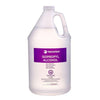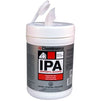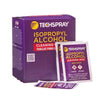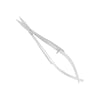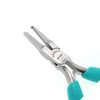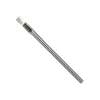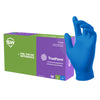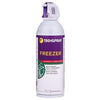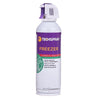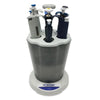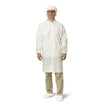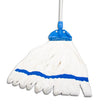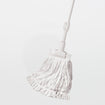- No products in the cart.
Best Types of Wipes to Use in a Cleanroom Environment
Aug
25
2020
Ensuring proper maintenance for a cleanroom environment is essential for achieving controlled conditions. Pollutants, such as airborne microbes and dust particles, need to continually be cleaned to provide a pollutant-free location for manufacturing. Maintaining a sterile cleanroom environment means carefully selecting specially designed hygiene-friendly cleaning solutions and products.
Read this article to discover the best types of wipes to use in a cleanroom environment to stay compliant, clean, and safe. Selecting the proper wipes makes all the difference.
 a piece of fabric. It reduces the chance of developing loose ends and leaving stray fibers, thus preventing lint. Depending on the manufacturing process and thread material involved, the quality of these wipes can be pretty durable, which means you can use them for the most critical of all applications.
a piece of fabric. It reduces the chance of developing loose ends and leaving stray fibers, thus preventing lint. Depending on the manufacturing process and thread material involved, the quality of these wipes can be pretty durable, which means you can use them for the most critical of all applications.
Cheaper versions of woven wipes contain redeemed fabrics, which means they're most likely to have dyes and other chemicals induced in them, increasing the chance of contamination to a cleanroom environment. High-quality woven wipes have delicate fabrics like rayon or polyester, both being synthetic fabrics.
Woven polyester wipes are durable, and you can easily sterilize them with the use of gamma irradiation. They're highly absorbent in terms of moisture such as greases and oils and cause minimum shedding of fibers and locked particles on fabrics. However, these wipes tend to be costly depending on the quality, and unless pretreated to suit requirements, they usually do not respond well to water-based solutions.
Manufacturers of these wipes combine added benefits of the two fabrics involved while giving off a seamless, pristine finish in every cleaning-based domain.
The ratio proportion for the fabric blend may vary as per the wipe requirement. Overall, average numbers are 55% polyester to 45% of cellulose. An increase in polyester would mean added strength and minimal linting, whereas an increase in cellulose content would provide an excellent solution absorbance rate.
While polycellulose may seem like your best option, it's essential to understand that every wipe type is useful for particular cleaning tasks.
For over 40 years, Lab Pro Inc. has been committed to providing polyester, cellulose, presaturated, and polycellulose wipes in California and worldwide. To learn more, visit the biggest Lab Supply showroom in California, or contact us online or at 888-452-2776.
Read this article to discover the best types of wipes to use in a cleanroom environment to stay compliant, clean, and safe. Selecting the proper wipes makes all the difference.
Woven wipes
Woven wipes are a product of interlaced threads traditionally woven together to form
Cheaper versions of woven wipes contain redeemed fabrics, which means they're most likely to have dyes and other chemicals induced in them, increasing the chance of contamination to a cleanroom environment. High-quality woven wipes have delicate fabrics like rayon or polyester, both being synthetic fabrics.
Non-woven wipes
Non-woven wipes are thermally bonded or entangled together using chemicals or solvents rather than being weaved. Another production method involves fibers, which are hydroentangled and contain numerous pressurized tiny water jets that shoot at the batting of blended fibers to manufacture the material. Non-woven wipes are economical, reliable, and low-linting, and are perfect for general surface cleaning.Presaturated wipes
Presaturated wipes are full of moisture and come in suitable solutions, materials, and packaging styles. They come in sterile and non-sterile formats. Isopropyl Alchohol (IPA) based presaturated wipes are ideal for a wide array of cleaning applications.Polyester wipes
If you're looking for one of the best wipe options to ensure high-maintenance and superior cleaning performance, polyester wipes are your one-stop solution. They come in different cuts to guarantee a sleek finish for every purpose, ranging from the economic knife cut edge to a lint-free ultrasonic sealed wipe.Woven polyester wipes are durable, and you can easily sterilize them with the use of gamma irradiation. They're highly absorbent in terms of moisture such as greases and oils and cause minimum shedding of fibers and locked particles on fabrics. However, these wipes tend to be costly depending on the quality, and unless pretreated to suit requirements, they usually do not respond well to water-based solutions.
Cellulose Wipes
Cellulose wipes are economical, as well as aqueous friendly. You can take care of water-based contaminations with cellulose wipes in almost every situation. Non-woven cellulose wipes are biodegradable and are ideal for general cleaning tasks. But beware, as most non-woven wipes are bound using glue or similar chemicals and amount to 30% of the weightage, which could lead to the dissolving of wipes while cleaning specific fluids and may eventually contaminate the area. Though they may be pocket-friendly, non-woven cellulose wipes are not resistant and may be prone to linting.Polycellulose
Polycellulose wipes, as the name suggests, are made from a blend of excellent polyester and cellulose materials. Thus, creating a masterpiece of polyester-based properties that ensure durability, in addition to high-absorbency with cellulose. The wipes are generally non-woven, resulting in the fibers' binding, hence the exceptional strength of the fabric. They do not consist of any glue-like chemicals or chemically produced binders. Instead, they are pure and residual free.Manufacturers of these wipes combine added benefits of the two fabrics involved while giving off a seamless, pristine finish in every cleaning-based domain.
The ratio proportion for the fabric blend may vary as per the wipe requirement. Overall, average numbers are 55% polyester to 45% of cellulose. An increase in polyester would mean added strength and minimal linting, whereas an increase in cellulose content would provide an excellent solution absorbance rate.
Summarizing Wipes
Every wipe has its pros and cons. To ensure you make the most out of your high-maintenance cleaning performances, resorting to woven polyester wipes may be a great option to eliminate contamination. However, for general cleaning tasks, non-woven cellulose and pre-saturated wipes are economical and could be your best bet! You can regard a polycelluolose wipe as the best of both worlds, as it seeks to combine exceptional traits of the blend of fabrics involved.While polycellulose may seem like your best option, it's essential to understand that every wipe type is useful for particular cleaning tasks.
For over 40 years, Lab Pro Inc. has been committed to providing polyester, cellulose, presaturated, and polycellulose wipes in California and worldwide. To learn more, visit the biggest Lab Supply showroom in California, or contact us online or at 888-452-2776.







